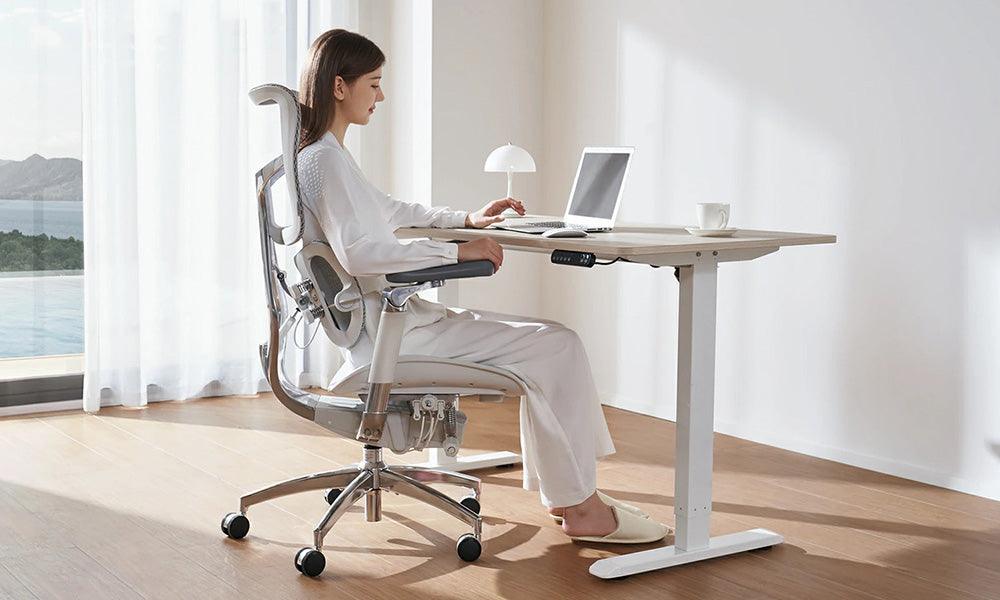In recent years, the standing desk has gained immense popularity as a potential solution to the sedentary lifestyle many office workers lead. It's no secret that sitting for prolonged periods can have detrimental effects on our health, including increased risk of obesity, heart disease, and even certain types of cancer. In contrast, standing desks offer the promise of increased energy, productivity, and overall well-being. However, transitioning to a standing desk isn't as simple as swapping out your chair for a taller surface. To truly reap the benefits, it requires thoughtful planning and execution. In this article, we'll explore tips and strategies for effectively incorporating a standing desk into your workday.
Understanding the Benefits of a Standing Desk
Before diving into the practical aspects, it's crucial to understand why standing desks are gaining popularity. Here are some key benefits:
- Improved posture: Standing encourages better alignment of the spine, reducing the risk of back and neck pain associated with prolonged sitting.
- Increased energy and alertness: Standing promotes better blood circulation and oxygen flow, leading to increased energy levels and improved focus.
- Burn more calories: Standing burns more calories than sitting, which can contribute to weight management and overall health.
- Reduced risk of chronic diseases: Studies have shown that prolonged sitting is associated with an increased risk of obesity, type 2 diabetes, and cardiovascular disease. Standing desks offer a way to mitigate these risks.
Gradual Transition
Transitioning to a standing desk should be a gradual process to allow your body to adapt. Start by standing for short periods, gradually increasing the duration over time. Aim for a balance between sitting and standing throughout the day, as standing for too long can also lead to fatigue and discomfort.
Invest in Quality Equipment
Investing in a high-quality standing desk and ergonomic accessories is essential for long-term comfort and productivity. Look for a desk that is adjustable in height, allowing you to switch between sitting and standing positions easily. Ergonomic accessories such as an anti-fatigue mat, ergonomic chair, and monitor arms can further enhance your comfort and posture.
Optimize Ergonomics
Proper ergonomics are critical to preventing discomfort and injury when using a standing desk. Here are some tips to optimize ergonomics:
- Keep your monitor at eye level to prevent neck strain.
- Position your keyboard and mouse at elbow height to maintain a neutral wrist position.
- Stand with your feet shoulder-width apart and your weight evenly distributed between both feet.
- Use an anti-fatigue mat to reduce pressure on your feet and lower limbs.
Incorporate Movement
While standing is better than sitting, remaining static for extended periods can still lead to discomfort and fatigue. Incorporating movement into your routine is essential for maintaining energy levels and preventing stiffness. Take short breaks to stretch, walk around, or perform light exercises throughout the day. Consider using a standing desk with a built-in treadmill or bike for added movement.
Listen to Your Body
Pay attention to your body's signals and adjust your standing desk setup accordingly. If you experience discomfort or fatigue, experiment with different standing and sitting positions, as well as adjustments to your desk and accessories. It may take some time to find the optimal setup that works for you, so be patient and persistent.
Stay Hydrated and Fuel Your Body
Standing requires more energy than sitting, so it's essential to stay hydrated and fuel your body with nutritious foods throughout the day. Keep a water bottle and healthy snacks nearby to maintain energy levels and prevent fatigue.
Set Realistic Goals
Set realistic goals for using your standing desk and gradually increase your standing time as your body adjusts. Start with short intervals of standing and gradually increase the duration over time. Remember that it's okay to sit when needed, and finding a balance that works for you is key.
Conclusion
Incorporating a standing desk into your workday can have numerous benefits for your health, productivity, and overall well-being. By understanding the benefits, gradually transitioning, investing in quality equipment, optimizing ergonomics, incorporating movement, listening to your body, staying hydrated, and setting realistic goals, you can make the most of your standing desk experience. Remember that finding the right balance between sitting and standing is key, and it may take some time to adjust to your new routine. With patience and persistence, you can master the art of the standing desk and enjoy a healthier and more productive workday.



































